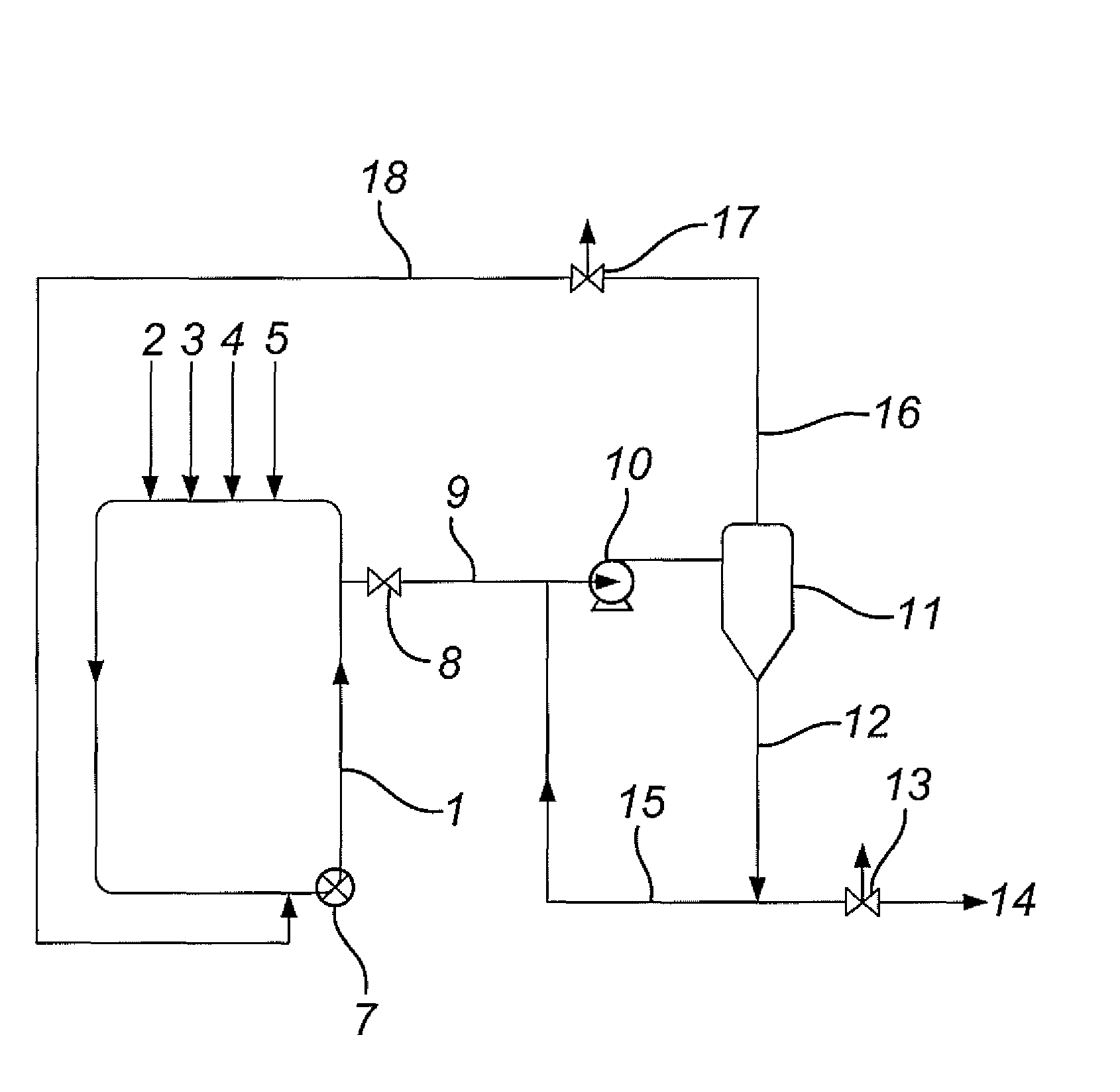Polymerisation process
a technology of polymerisation and process, applied in the field of polymerisation process, can solve the problems of compromising the efficiency of solids concentration and particle size separation, the inability to provide a means of varying the solids concentration of the feed to the concentrator independently, and the inability to achieve the effect of improving the efficiency and reliability of separation, reducing the risk of affecting the operation of hydrocyclones, and reducing the risk of affecting the operation
- Summary
- Abstract
- Description
- Claims
- Application Information
AI Technical Summary
Benefits of technology
Problems solved by technology
Method used
Image
Examples
example 1
[0041]This example is an arrangement as shown in FIG. 1, in which a polymer-containing slurry is discharged from a reactor 1 into a hydrocyclone 11 via line 9. The solids-lean stream from the hydrocyclone is recycled to the reactor via line 16, whilst the solids-rich stream from the hydrocyclone is separated into two flows, one of which passes downstream via line 14, and the other of which is recycled into line 9 via line 15.
[0042]The production rate of the reactor is 10000 kg / h, and it has a solids concentration of 41 wt %. The conditions in the lines shown in FIG. 1 are given in Table 1 below.
[0043]
TABLE 1Line 9Line 9beforeafterrecycleLine 12Line 14Line 15Line 16recycleTotal slurry flowkg / h330003458018690158901431048889Liquid flowkg / h1947016080869073901078026859Solid flowkg / h1353018500100008500353022030Solids contentwt %41.053.554.054.025.045.1Vol flowratem3 / h57.755.430.025.527.783.1
In this Example, the hydrocyclone increases the solids concentration of the stream to be passed dow...
example 2
[0044]This Example shows how recycling part of the solids-rich flow from the hydrocyclone can enable a constant solids concentration to be maintained at the input into the hydrocyclone, despite different conditions in the stream exiting the reactor. In this Example, the solid flowrate leaving the reactor is higher than Example 1, but the solids concentration is lower.
[0045]
TABLE 2Line 9Line 9beforeafterrecycleLine 12Line 14Line 15Line 16recycleTotal slurry flowkg / h376104571018690270201891064620Liquid flowkg / h22940212608690125601425035500Solid flowkg / h14670244501000014460466029120Solids contentwt %39.053.554.054.025.045.1Vol flowratem3 / h66.673.230.043.336.6109.9
PUM
| Property | Measurement | Unit |
|---|---|---|
| Fraction | aaaaa | aaaaa |
| Fraction | aaaaa | aaaaa |
| Time | aaaaa | aaaaa |
Abstract
Description
Claims
Application Information
 Login to View More
Login to View More - R&D
- Intellectual Property
- Life Sciences
- Materials
- Tech Scout
- Unparalleled Data Quality
- Higher Quality Content
- 60% Fewer Hallucinations
Browse by: Latest US Patents, China's latest patents, Technical Efficacy Thesaurus, Application Domain, Technology Topic, Popular Technical Reports.
© 2025 PatSnap. All rights reserved.Legal|Privacy policy|Modern Slavery Act Transparency Statement|Sitemap|About US| Contact US: help@patsnap.com


